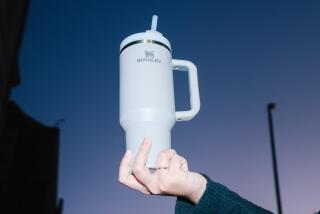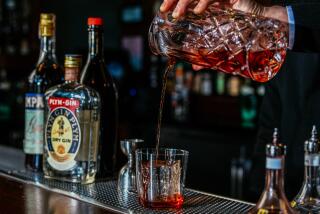Clearing Up the Off-Color Bottle Issue
Question: What caused some of the different colors in glass that can be seen in collectible bottles?--L.B.
Answer: A bottleâs off color, which can make old bottles highly collectible, was caused by impurities in the sand that glassmakers used to fashion their products. As glassmakers became more sophisticated, the impurities were removed, resulting in clearer glass.
Among collectible off-color glassware is the fruit jar, often sold empty in the 19th Century so that it could be used for home storage of various foodstuffs.
A number of colorful jars can be found at flea markets and, taken together, can make for an interesting, colorful display.
Whatâs more, unlike some other areas of collectibles in which age translates into megabucks, century-old jars can still be found with price tags in the $10-to-$40 range. One reason why these items can be obtained for reasonable prices is supply and demand: There were so many made that the marketplace is still relatively well supplied.
One of the most collectible bottles of this genre is the Mason jar, named after John Landis Mason, who patented a zinc lid for fruit jars in 1858. Business boomed for Mason for a time. But then it was discovered that the zinc could affect foodstuffs in the jars.
This problem was subsequently resolved by the invention of glass lids for Mason jars about a decade after Masonâs brainstorm first hit the market.
Masonâs patent rights on his jar were transferred a few years later from Hero Glass Works of Philadelphia to Consolidated Fruit Jar Co. of that city. By 1880, however, his patent rights had expired, and the Mason jar was produced by the millions throughout the country.
Once again, this is why collectors can pick up authentic Mason jars of the pre-1900 period for relatively cheap prices.
Q: I have a collection of Franklin D. Roosevelt items, including political buttons of 1932, 1936, 1940 and 1944. My collection also includes a couple of banners and some posters. Have they held their value over the years?--C.D.
A: Indeed, they have. F.D.R. memorabilia has not lost its appeal among political collectors.
For example, recent dealer prices for F.D.R. buttons in good condition have been in the $15 area and higher.
An original F.D.R. cloth election banner in good condition can change hands for more than $200, according to some catalogue prices.
F.D.R. posters in good condition have sold for more than $100.
Unfortunately, political campaigns of the modern era have not produced very many of the colorful banners, ribbons and buttons of the older political brawls.
More on Mason jars and San Franciscoâs 80th earthquake anniversary:
A.R. of San Gabriel says the reason that San Francisco earthquake memorabilia collector Ron Ross has melted Mason jars in his coLlection of items that survived the 1906 temblor isnât because of the earthquakeâs direct devastation but because of the ensuing fire.
âThe fires that started when the gas mains ruptured caused more damage than the quake itself,â A.R. said.
âIn some parts of the city, the only way to douse the flames (after the quake) was to dynamite the buildings; hence, the widespread devastation.â
Incidentally, earthquake memorabilia collector Ross is making available for $4 an 80th anniversary booklet of San Francisco earthquake photos from his collection. Itâs available through Ron Ross Productions, 292 Red Hill Ave., San Anselmo, Calif. 94960.
Ronald L. Soble cannot answer mail personally but will respond in this column to questions of general interest about collectibles. Do not telephone. Write to Your Collectibles, You section, The Times, Times Mirror Square, Los Angeles 90053.


